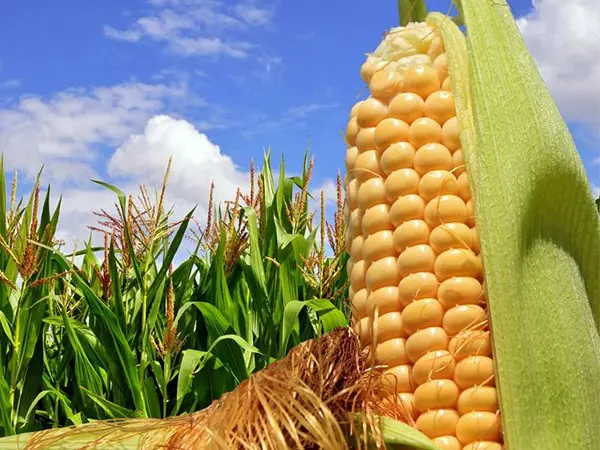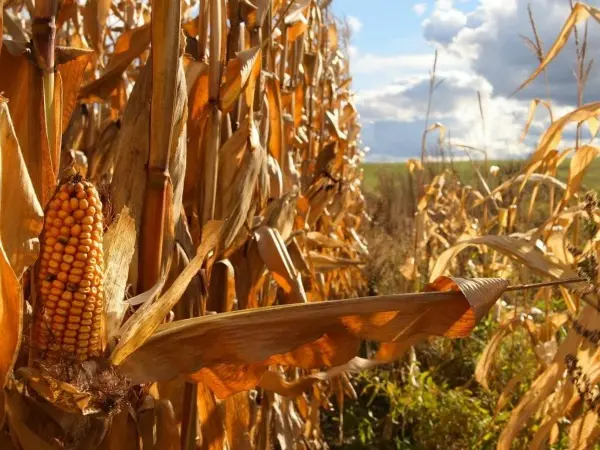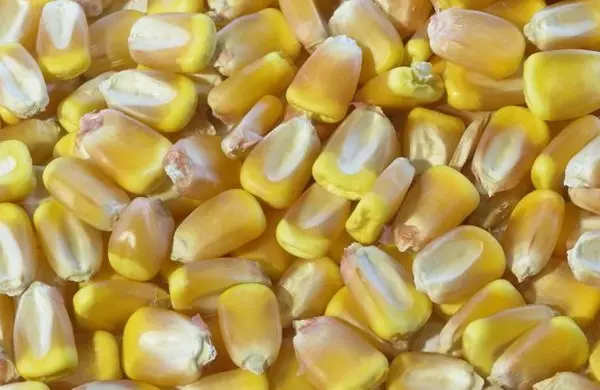Contents


Corn is a popular product, without which it is difficult to imagine a real summer. Boiled sugar cob flavored with salt is one of the favorite treats not only on public beaches, but also for avid summer residents. Yes, and in the cold season, salads with canned sweet grains will always come to the table. If you decide to grow a crop yourself, it is very important to choose good corn seeds and follow all the planting technology. All these questions will be considered in detail in our article.
How to Grow Corn for Good Seeds
In order to get good grains, care should be taken to ensure that the culture grows and develops correctly. Healthy plants are the key to properly developing seeds. So, you need to grow a healthy culture that will give the same healthy and abundant offspring.
It is enough to follow a simple technology of growing and caring for a crop. This involves proper soil preparation, sterilization, fertilization, as well as pest control during growth, timely watering and control of the conditions in which the corn grows. And now about everything in order.

Corn grows best after beets, potatoes, legumes and winter crops. The soil is gaining nutrients that contribute to the proper growth and development of corn. However, you can grow it in the same place where it grew last year. On black soil, corn can be grown for 10 years on the same plot.
The soil under sowing should be dug up at least 8 centimeters, after which fertilizer should be applied and distributed to a depth of 30 centimeters. So the root system of the plant will develop properly and receive all the necessary nutrients from the soil. Digging and fertilizing the soil is best done a few weeks before sowing. A week later – cultivate the soil again and remove all weeds. It is important to maintain soil moisture, destroy all extraneous plants, and create favorable conditions for growth.
Corn should be fed with nitrogen, phosphate, potassium, magnesium and calcium. It is worth remembering that this culture requires a more careful and abundant application of nutrients. At the same time, for different climatic zones and soil types, the ratio of substances will be different. By the way, fertilizers are not applied at a time, but at different periods of soil preparation. So phosphorus and potassium should be added to the soil in the fall, and magnesium, calcium and nitrogen – just before cultivation.

An important factor is also the preparation of seeds for sowing the parent crop. It is best to purchase seeds prepared at the factory. The germination and germination energy of such grains is maximum. However, you can also take seeds from your stocks, making sure of their integrity and the absence of any diseases, starting with banal mold. Seeds are planted at a depth of 4–6 centimeters.
signs of maturation
Before harvesting corn grains for sowing, you need to make sure that they are completely ripe. To do this, it is worth checking the condition of both the corn cob itself and the seeds by moving the leaves covering them.
How do you know if corn is ripe? To begin with, it is worth paying attention to the condition of the female threads of the cob. As they mature, they turn brown. The main thing is not to wait until the threads begin to dry. Ripe is considered corn with darkened, but still moist, juicy threads.

The next step is to assess the condition of the corn cob. The outer layers of the wrapper are covered with a drying edge within a millimeter. The color of the wrapper loses its saturation, begins to lighten. The correct color of the wrapper during ripening is light green.
The grains themselves should be dense, filled, elastic. Their rows should tightly close together. The surface of the grains should be smooth, without wrinkles or dents. If you press on such a grain, then a thin light yellow shell breaks through. Its contents are a milky white liquid.
If you delay harvesting corn heads, the grains will become hard, wrinkled, and their development will slow down. Therefore, it is important to harvest in a timely manner, within two weeks as the grains ripen. However, things will go faster in a garden plot, because there will be fewer rows and plants than in industrial-scale fields.
The cobs that you have chosen for future seed collection should be left until the fall.

Selecting cobs for future seed collection is quite easy. On several arbitrary plants (some gardeners say that it is best to choose the most actively developing ones), it is worth calculating the largest cobs and leaving some kind of marking so as not to cut them off accidentally during the collection period. It is best to tie them with a bright ribbon and leave them on the plant until early autumn.
How to collect
The cobs left to form the seed are harvested when the head wraps turn yellow and become dry and tough, and the kernels become hard and deep yellow. This stage is called the “wax maturity” stage. Cobs that have reached this stage are already completely inedible. They can neither be frozen nor boiled – nothing tasty will come of this venture. However, not for this they were left to ripen on the stem.
As soon as the heads of cabbage are ripe, they should be cut and sent to a dry and warm place. It is under such conditions that the testicles develop best over the next three weeks.

The selection of seeds from the cobs is made in the fall. Most often, the analysis of the head of cabbage is taken already in the month of October, after all summer work is over, and the brave gardeners return to their city apartments. By this time, the seeds become completely dry, resembling glass to the touch.
Take out the grains from the head with your hands, so as not to damage. This does not require much effort. Properly dried seeds are separated quite simply and quickly.
It is worth taking grains from the middle of the cobs. From the edges, they often do not develop enough to give offspring, they do not have suitable seedlings or energy characteristics.
After parsing the cob, the grains should be left for another week to dry, and only then packaged in bags. If you are growing several different varieties, label the bags so there is no confusion before planting. Properly dried seeds in suitable conditions can be stored and retain their growth ability for up to 5 years.
Remember to avoid storing seeds in damp and cold areas. Otherwise, the seeds may freeze or become moldy. Thus, all the work will go down the drain and you will lose good material for growing new plants next year.
Video “How to prepare corn kernels”
This video will show you how to properly prepare your own planting material for sowing corn.









